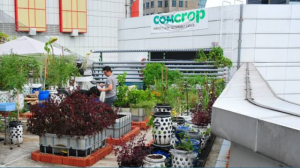About the park
Turin Environment Park was founded in 1996 on the initiative of the Piedmont Region, the Province of Turin, the Municipality of Turin and the European Union. It represents an original experience among the science and technology parks of Europe in the sense that it combines innovation technology with eco-efficiency. As a whole, Environment Park covers an area of about 30.000 square meters consisting of laboratories, offices and service centers in a building environment that uses low environmental impact solutions. (source: www.envipark.com/en)
